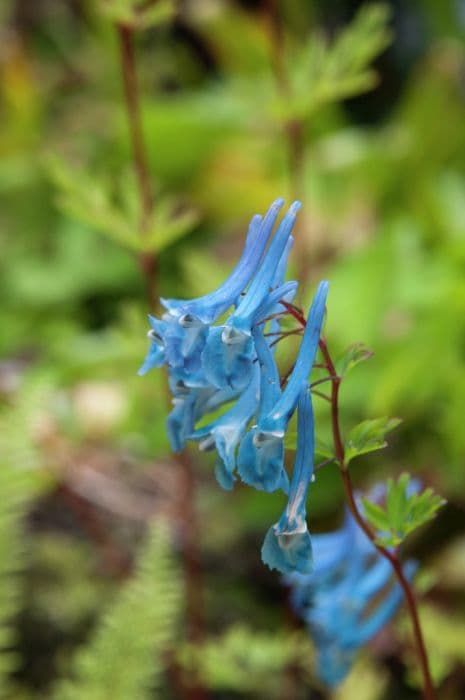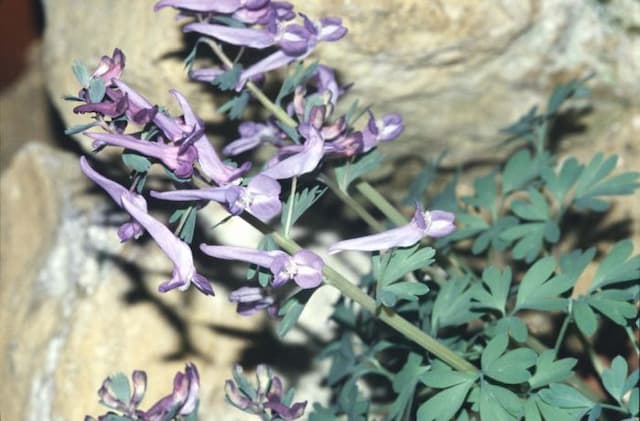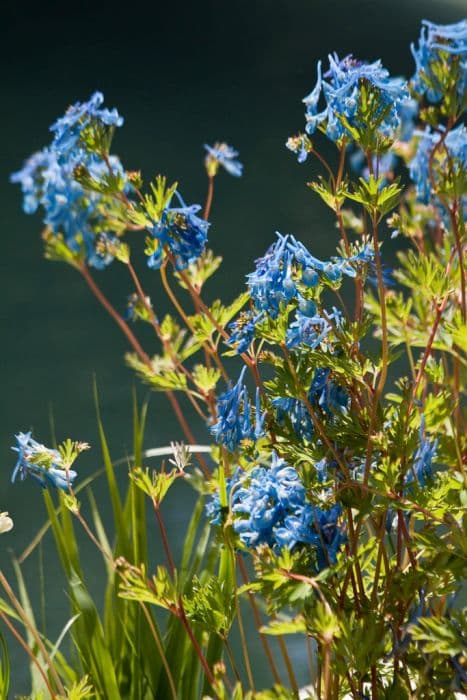Corn poppy Papaver rhoeas

ABOUT
The plant commonly known as the corn poppy displays a delicate and attractive appearance. It is characterized by its vibrant red, paper-thin petals that usually show slight black markings at their base. These petals form a cup-like structure and are typically composed of four individual petals that create a simple yet striking flower. The flowers possess a recognizable single, black spot at the base, which contrasts with the red, creating a distinctive and eye-catching look. The center of the flower is dominated by a cluster of stamens surrounding a central ovary, which is often dark or black and can be quite prominent, drawing the eye toward the heart of the blossom. The pistil, or female part of the flower, juts out from the center, usually having a rounded or club-shaped top that can be seen amid the stamen. Leaves of this plant are lanceolate, meaning they are longer than they are wide and have a slender, tapering shape. They are typically feather-like or deeply lobed and have a soft, sometimes hairy texture. The foliage hue ranges from light to mid-green, providing a soothing backdrop to the vivid blossoms. The stems, which support the flowers, are thin and sometimes hairy, and they can branch, each branch terminating in a single spectacular flower. The overall impression of the corn poppy is one of grace and poise, as it sways gently in the wind, its bright flowers creating bursts of color in the landscape where it grows.
About this plant
 Names
NamesFamily
Papaveraceae
Synonyms
Common Poppy, Corn Poppy, Field Poppy, Flanders Poppy, Red Poppy, Corn Rose, Red Weed
Common names
Papaver dubium, Papaver lecoqii, Papaver rhoeas var. strigosum.
 Toxicity
ToxicityTo humans
The common name for Papaver rhoeas is corn poppy, also known as common poppy or field poppy. It is not considered highly toxic to humans; however, as with many plants, ingestion can potentially cause mild stomach upset. The plant contains various alkaloids, but in low concentrations compared to other poppy species such as the opium poppy. There are no significant reports of poisoning by corn poppy in humans, and it is sometimes used in culinary applications, such as in the flavoring of some foods and wines. Nonetheless, large quantities consumed could lead to negative effects, so it is always best to err on the side of caution and avoid ingesting plants that are not commonly used as food sources.
To pets
Corn poppy is not considered highly toxic to pets, but as with humans, ingestion of the plant could potentially cause mild digestive upset in animals such as cats and dogs. While not containing significant levels of the opiate compounds found in some other poppy species, it does have various alkaloids which could cause vomiting or diarrhea if consumed in large amounts. There is no widespread evidence of severe poisoning from corn poppy in pets, but it is generally recommended to keep pets from eating ornamental plants to avoid any potential health issues. If a pet ingests a large amount of corn poppy and exhibits signs of distress, it is prudent to contact a veterinarian.
 Characteristics
CharacteristicsLife cycle
Annuals
Foliage type
Deciduous
Color of leaves
Green
Flower color
Red
Height
1-2 feet (30-60 cm)
Spread
1 foot (30 cm)
Plant type
Herb
Hardiness zones
3-9
Native area
Europe
Benefits
 General Benefits
General Benefits- Ecosystem Support: Provides food for various insects, including bees and butterflies, contributing to pollination and biodiversity.
- Aesthetic Value: Adds beauty to landscapes with its vibrant red flowers, which can enhance mental well-being.
- Cultural Symbolism: Represents remembrance and has significant meaning in various cultures and occasions such as Remembrance Day.
- Soil Improvement: Can act as a pioneer species in disturbed soils, helping to stabilize the soil and pave the way for other plants to grow.
- Culinary Uses: Edible petals of the common poppy can be used in salads, teas, and for garnishing, adding a unique flavor and color.
- Wildlife Habitat: Fields of common poppy can serve as a habitat for small animals and birds, providing shelter and food.
- Educational Interest: Offers opportunities for educational activities such as plant identification, botanical studies and conservation awareness.
 Medical Properties
Medical Properties- Sedative: Papaver rhoeas may have sedative effects and is sometimes used to promote relaxation or sleep.
- Analgesic: The plant has been used traditionally to relieve pain, including toothache and various neuralgias.
- Antitussive: It is known to possess cough-suppressing properties and has been used in treating coughs.
- Anti-inflammatory: Papaver rhoeas may contain compounds that help reduce inflammation.
- Expectorant: The plant has been used to help expel phlegm from the respiratory tract.
- Emollient: Papaver rhoeas has been used externally for its soothing and softening effect on the skin.
 Air-purifying Qualities
Air-purifying QualitiesThis plant is not specifically known for air purifying qualities.
 Other Uses
Other Uses- Papaver rhoeas, commonly known as the common poppy, has been used as a natural dye, offering subtle red and orange hues for fabrics and artisanal crafts.
- The petals of the common poppy can be used as a coloring agent in food and drinks, providing a vibrant color naturally.
- In the past, common poppy petals have been pressed to create botanical prints and artwork, taking advantage of their delicate structure and color for aesthetic purposes.
- The seeds of the common poppy, while not as well-known as the opium poppy's, can be used in cuisine for adding texture and flavor to breads, cakes, and pastries.
- Common poppy flowers have been used in potpourri mixes for their fragrance and color, contributing to visually appealing and scented blends.
- The common poppy can be used in educational settings to demonstrate the life cycle of a plant from seed to flower, helping in botany lessons for students.
- This plant serves as an important pollen and nectar source for bees and other pollinators, playing a role in maintaining biodiversity.
- The dried seed pods of the common poppy are often used in floral arrangements and wreaths, valued for their interesting structure and form.
- Artists have used the imagery of the common poppy in paintings, photography, and textiles to convey messages of peace and remembrance, especially related to its symbolism in World War I.
- Eco-friendly confetti made from dried common poppy petals has become an alternative to standard confetti to reduce litter and environmental impact at celebrations.
Interesting Facts
 Feng Shui
Feng ShuiThe common poppy is not used in Feng Shui practice.
 Zodiac Sign Compitability
Zodiac Sign CompitabilityThe common poppy is not used in astrology practice.
 Plant Symbolism
Plant Symbolism- Remembrance: Poppies, particularly red poppies, are a symbol of remembrance for soldiers who have died in wartime, especially since World War I's end, due to the iconic poem "In Flanders Fields" where these flowers blanketed the war graves.
- Peace: Following the use in remembrance of fallen soldiers, poppies also came to symbolize peace and the end of conflicts.
- Death: In Western cultures, because of their presence in battlefields and grave sites, poppies can represent death, eternal sleep, and oblivion.
- Resilience and Hope: Poppies are hardy flowers, often among the first to bloom in disturbed soil, such as former battlefields in Europe; they symbolize resilience to adversity and hope for a peaceful future.
- Dreams: Because of the soporific effects of some poppy species, poppies can also symbolize sleep, rest, and dreams.
 Water
WaterThe common poppy, or corn poppy, requires moderate watering. During the growing season, it is best to water them once a week with about 1-2 inches of water, depending on the soil type and weather conditions. In hot, dry periods, additional watering may be necessary, but always allow the soil to dry out slightly between waterings. Over-watering can lead to root rot, so ensure that the soil is well-drained. During winter or in cooler climates, reduce the watering frequency to prevent the soil from becoming waterlogged.
 Light
LightThe common poppy thrives best in full sun conditions, which means it requires at least 6 hours of direct sunlight each day to grow and flower optimally. A south-facing location is typically ideal for maximum sun exposure. While it can tolerate partial shade, the blooms may not be as plentiful or vibrant without sufficient light.
 Temperature
TemperatureCorn poppies prefer temperate climates and grow best when daytime temperatures are between 60°F and 70°F. They can survive minimum temperatures down to around 14°F but may not survive prolonged periods of frost. Ideal growth occurs when temperatures do not exceed 75°F, as excessive heat can stress the plants and affect blooming.
 Pruning
PruningPruning common poppies is generally not necessary as they are self-seeding annuals. However, deadheading spent flowers can encourage a second bloom and prevent excessive self-seeding if desired. The best time for deadheading is after the petals have fallen and the seed pod has formed; simply snip off the old flower heads at the stem.
 Cleaning
CleaningNot needed
 Soil
SoilThe common corn poppy, Papaver rhoeas, thrives in well-drained, fertile soil with a pH range of 6.0 to 7.0. The best soil mix can be achieved by blending loam with compost and a small amount of sand to improve drainage. Regular garden soil amended with organic matter should suffice.
 Repotting
RepottingCorn poppies, being annuals, do not typically require repotting. They are best sown directly where they are to flower and develop, as they do not respond well to transplanting due to their sensitive root systems.
 Humidity & Misting
Humidity & MistingCorn poppies, or field poppies, are not particularly humidity-sensitive and can tolerate a range of atmospheric moisture levels. They grow well in average outdoor conditions and do not require high humidity environments.
 Suitable locations
Suitable locationsIndoor
Grow in sunny spot, use well-draining soil mix.
Outdoor
Sow directly in sunny spot with well-drained soil.
Hardiness zone
2-9 USDA
 Life cycle
Life cycleThe life of the common poppy (Papaver rhoeas) begins with seed germination, which occurs in early spring when temperatures rise and the soil is moist. After germination, seedlings emerge and the plant enters the vegetative growth stage, developing a rosette of leaves close to the ground. With adequate sunlight and nutrients, the poppy proceeds to the flowering stage in late spring to early summer, producing vibrant red blooms that attract pollinators for sexual reproduction. After pollination, the flowers are replaced by seed pods that mature, dry out, and split open to release numerous tiny seeds. These seeds can enter a period of dormancy, particularly if they fall on dry soil, surviving in the soil seed bank until conditions are favorable again for germination. The common poppy does not regrow from the same rootstock the following year; instead, it completes its life cycle within a single season, relying on its prolific seed production to ensure its propagation.
 Propogation
PropogationPropogation time
Spring
The common poppy, also known as Papaver rhoeas, can be propagated easily by seed. The best time for sowing poppy seeds is in early spring, as soon as the soil can be worked, or in autumn where winters are mild. Scatter the tiny seeds directly onto a well-prepared seedbed in your garden where you wish the flowers to bloom since poppies do not transplant well due to their taproot system. Gently press the seeds into the soil but do not cover them as they require light to germinate. Keep the soil moist but not waterlogged. Germination usually occurs within two weeks if the soil temperature is around 60°F (16°C). Thin the seedlings to about 6 to 8 inches apart to allow each plant enough space to grow.









